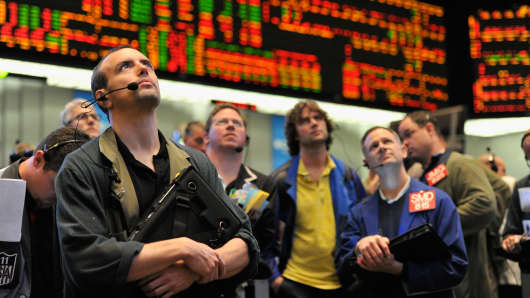(Read More: This Bullish Indicator at 58-Year High)
"Such a potential outcome would not be surprising to us considering that it fits our thesis for a serious correction in equities, commodities and corporate bonds and one that is likely to be increasingly severe the longer that some of these risk assets rally at or near record highs," she said.
Death crosses and other similar technical formations are sometimes dismissed by fundamental analysts as coincidence and tied to psychological factors that may not be present.
In the equity markets, the crosses can be contrarian signals that actually have seen stocks move higher.
But Doolittle traced the previous four 10-year-note death crosses and found that they consistently have signaled sharp yield declines.
(Read More: Yoshikami: What Happens After Ben?)
The first cross came in September 2007 and preceded a drop from 4.62 percent to 3.3 percent in seven months; the second in September 2008 preceded a fall from 3.87 percent to 2.05 percent in four months; the third in June 2010 saw the yield slide from 3.30 percent to 2.38 percent, and the most precipitous of all, in June 2011, saw a plunge from 3.16 percent to 1.38 percent.
The two moving average lines again are traveling in close unison, and a sharp enough drop on the 50-day would trigger a new cross.
"This bearish technical aspect may mark the beginning of a move down below 1 percent and a possibility that is consistent with our work for more than a year now," Doolittle said. "It should be noted, however, that the 10-year yield may trade up toward 2 percent before starting this possible decline."
A drop in Treasury yields usually is associated with a decline in stocks as well, but the market has been pretty much bullet-proof through 2013, nearing 180 days without a 5 percent pullback.
(Read More: Zell on Market: A 'Giant Game of Musical Chairs')
For all its strength, though, the market looks just as vulnerable to at least a modest pullback. Some 351 companies on the Standard & Poor's 500 are in overbought territory when compared to their usual trading ranges, though the index continues to set record highs.
Corporate bonds also are in uncharted territory, with yields flirting with 5 percent.
Commodities, though, have been weak, with the CRB Commodity Index off 3.2 percent in 2013.
At the same time, a much-expected flight from bonds into equities this year has failed to materialize.
(Read More: Stocks and Bonds Fight, but Maybe Both Are Right)
Continuing a trend, last week saw bond mutual fund inflows increase $961 million. Equity funds ended a long winning streak with $4.4 billion in outflows, according to the Investment Company Institute.
For the year, equity funds have taken in $68.8 billion, while bonds have received an even more impressive $85.5 billion.
Doolittle said a death cross would "reflect yet another aftershock to the credit crisis and the world's 30-year borrowing binge ... and would probably serve to amaze the many investors who have been calling for Treasurys to reverse down into a bear market.
"It is the strong possibility of a Death Cross coming in the 10-year yield that suggests the historic running of the bulls in Treasurys will continue ... as investors seek safe haven assets and flee risk assets."
_ By CNBC.com's Jeff Cox. Follow him on Twitter at @JeffCoxCNBCcom.





